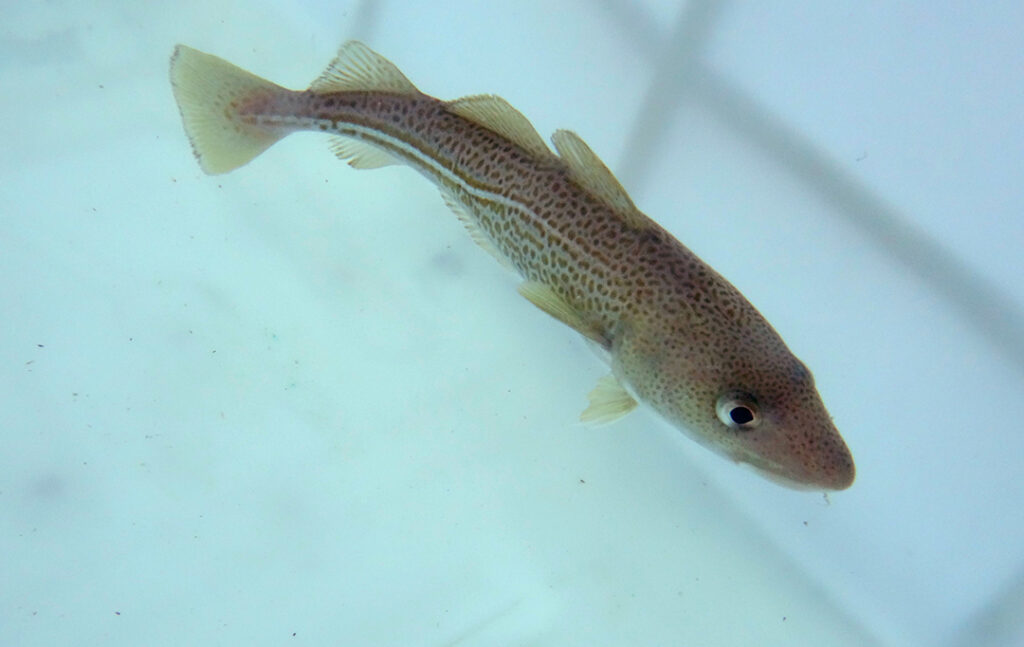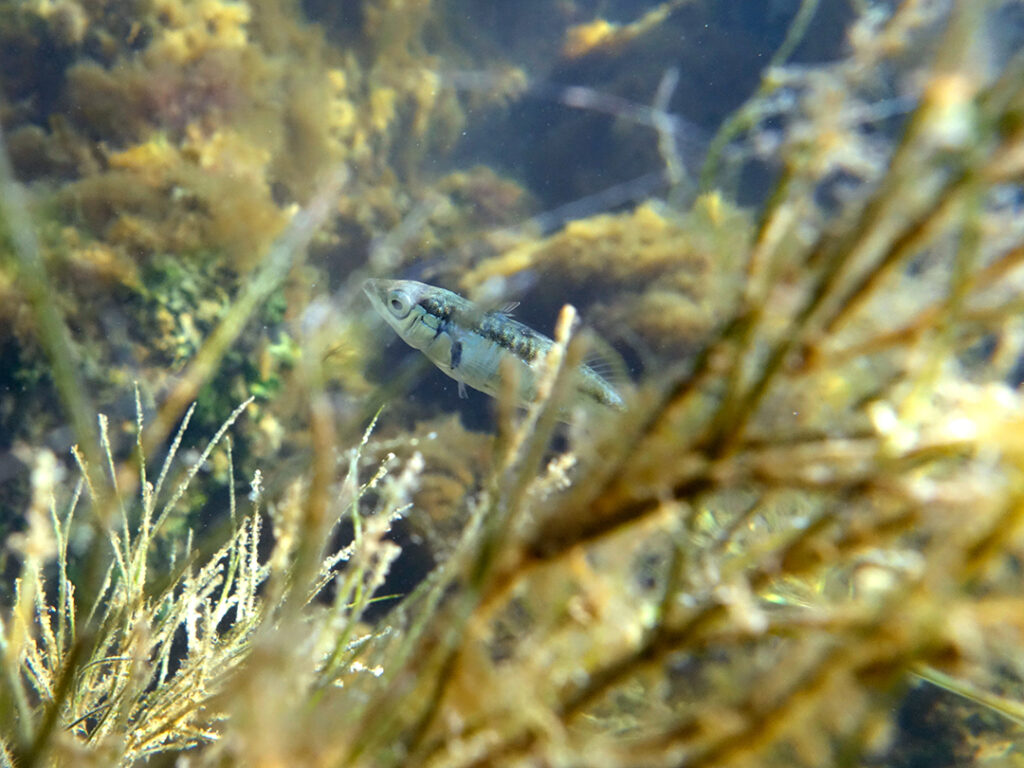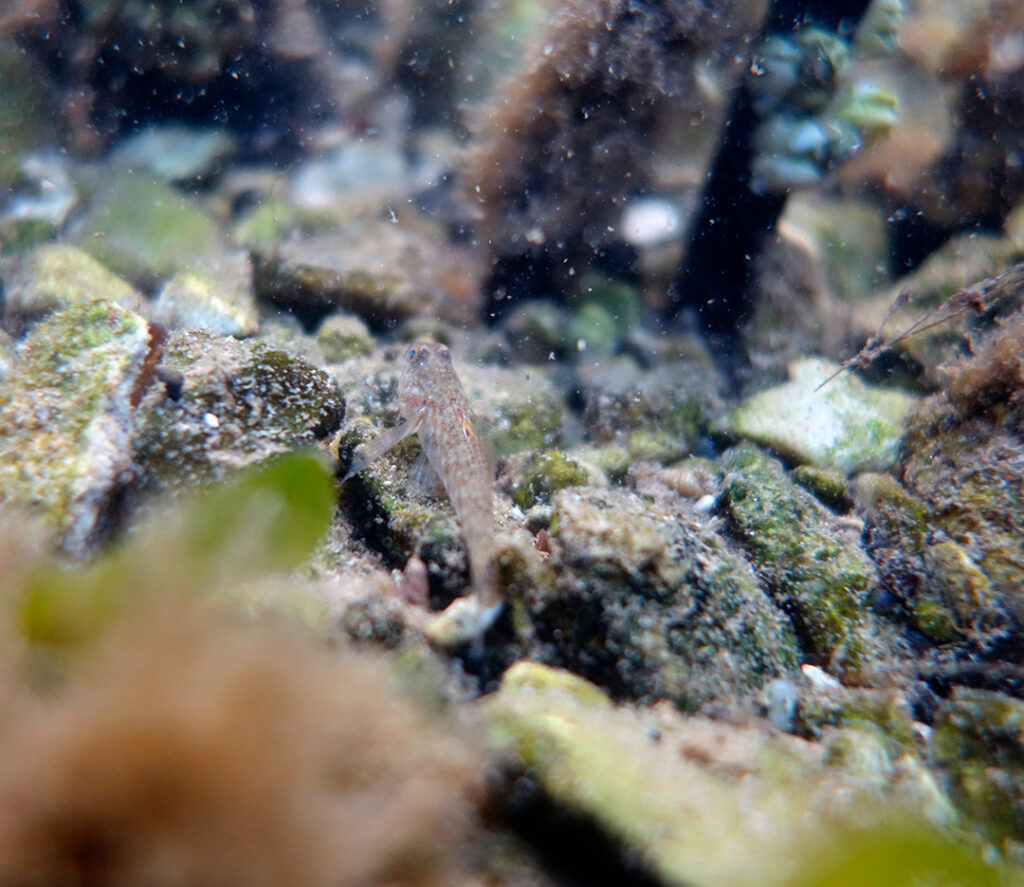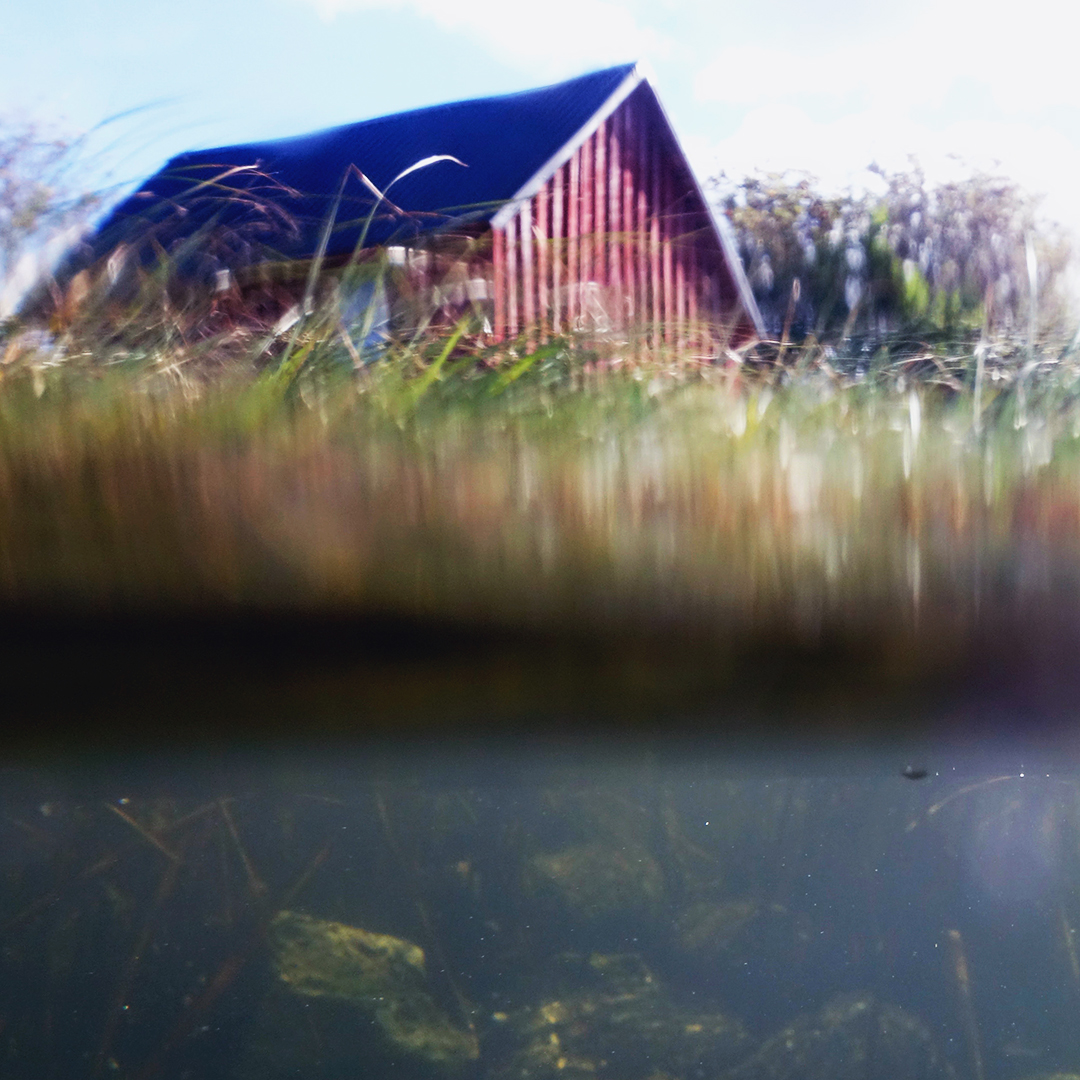After more than a year at the Ar research station, it was time to say goodbye to some 20 cod. As we drive down the small dirt road towards the shore, with the cod in a tank on the flatbed, it’s with a sense of hope. The cod have matured considerably during their time at the station, which means they’ll be well equipped for life in the Baltic. Hopefully, they’ll spawn and contribute new cod larvae to the Baltic, just as they’ve done in the ReCod project.
To ensure genetic variation in the cod larvae hatched at the station, the project needs to continuously replace the cod living at Ar. This also means that some of the cod that have been at the station for a longer period of time need to leave. A while ago, around 20 ReCod cod moved to Skansen’s Baltic Sea Science Centre, and now it’s time for another 20 to move out.
Johanna Fröjd, ReCod project manager, carefully backs the flatbed down to the water’s edge. The cod are lifted out one by one and gently released over the steeply sloping shoreline. Once in the water, the cod swim to the bottom and out towards greater depths – sometimes one by one, sometimes in pairs.







We wish the ReCod cod the very best of luck!
Photos: Madeleine Kullenbo, BalticWaters

Want to learn more about ReCod?
Take a look at the project’s website (in Swedish), or read about ReCod’s first operational year and meet the new generation of Baltic cod that moved into Ar in late November.

